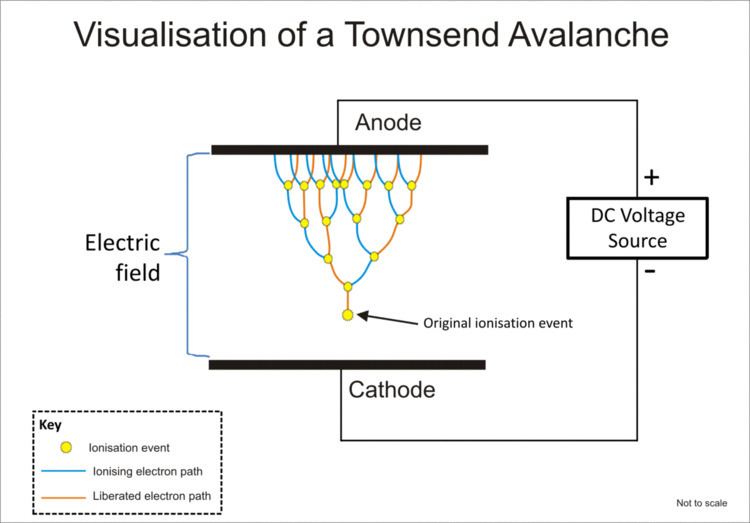 | ||
Electric discharge in gases occurs when electric current flows through a gaseous medium due to ionization of the gas. Depending on several factors, the discharge may radiate visible light. The properties of electric discharges in gases are studied in connection with design of lighting sources and in the design of high voltage electrical equipment.
Contents
Discharge types
In cold cathode tubes, the electric discharge in gas has three regions, with distinct current-voltage characteristics:
Glow discharge is facilitated by electrons striking the gas atoms and ionizing them. For formation of glow discharge, the mean free path of the electrons has to be reasonably long but shorter than the distance between the electrodes; glow discharges therefore do not readily occur at both too low and too high gas pressures.
The breakdown voltage for the glow discharge depends nonlinearly on the product of gas pressure and electrode distance according to Paschen's law. For a certain pressure × distance value, there is a lowest breakdown voltage. The increase of strike voltage for shorter electrode distances is related to too long mean free path of the electrons in comparison with the electrode distance.
A small amount of a radioactive element may be added into the tube, either as a separate piece of material (e.g. nickel-63 in krytrons) or as addition to the alloy of the electrodes (e.g. thorium), to preionize the gas and increase the reliability of electrical breakdown and glow or arc discharge ignition. A gaseous radioactive isotope, e.g. krypton-85, can also be used. Ignition electrodes and keepalive discharge electrodes can also be employed.
The E/N ratio between the electric field E and the concentration of neutral particles N is often used, because the mean energy of electrons (and therefore many other properties of discharge) is a function of E/N. Increasing the electric intensity E by some factor q has the same consequences as lowering gas density N by factor q.
Its SI unit is V·cm2, but the Townsend unit (Td) is frequently used.
Application in analog computation
The use of a glow discharge for solution of certain mapping problems was described in 2002. According to a Nature news article describing the work, researchers at Imperial College London demonstrated how they built a mini-map that gives tourists luminous route indicators. To make the one-inch London chip, the team etched a plan of the city centre on a glass slide. Fitting a flat lid over the top turned the streets into hollow, connected tubes. They filled these with helium gas, and inserted electrodes at key tourist hubs. When a voltage is applied between two points, electricity naturally runs through the streets along the shortest route from A to B – and the gas glows like a tiny glowing strip light. The approach itself provides a novel visible analog computing approach for solving a wide class of maze searching problems based on the properties of lighting up of a glow discharge in a microfluidic chip.
